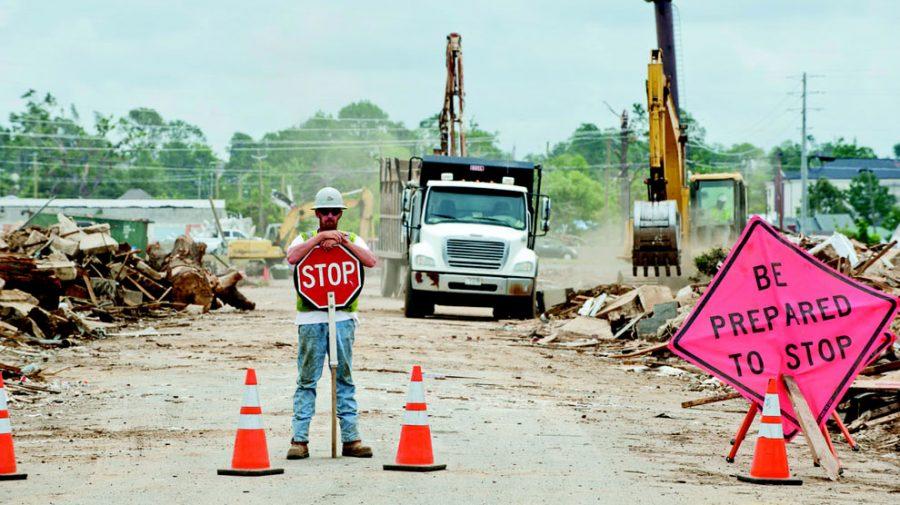Three months ago today, Tuscaloosa was hit by a catastrophic tornado, and the city has been working on unveiling plans for rebuilding.
Although officials have stressed that these plans were just a first draft, they believe it is important for the citizens of Tuscaloosa who were affected by the tornado to see the progress that has been made thus far.
“We’re going to be bold,” Mayor Walt Maddox said. “Everything that we propose is not going to be the right fit for Tuscaloosa, but throwing ideas out there and talking about how to improve your community, that’s a great dialogue.”
The plans, which were based on input from Tuscaloosa citizens rather than city officials, focused on making Tuscaloosa much more community-centric than it was in the years leading up to the tornado.
“We have to have a community that is healthy and vibrant and that provides us with all of what we need in our daily lives,” said John McConnell, director of planning and development services. “Our community is not always like that in a lot of places; we’ve separated our uses, we’ve separated parks from neighborhoods, we’ve neighborhoods that aren’t connected to other neighborhoods or businesses, so we’ve got an opportunity to repair a lot of those mistakes, and that’s what this plan is all about.”
On Saturday, Tuscaloosa citizens had their first opportunity to come in, look over the finished first draft of the plans and voice any problems or concerns that they had with it. Many of the people directly involved with the project, such as McConnell and Mayor Maddox, were around to answer questions all afternoon. Mayor Maddox joked that after only an hour and a half, he was going hoarse, but it was worth it.
“What a great dialogue we’re having with our community about our future,” he said. “The fact that we can agree and disagree, that is our government at its best.”
In order to make Tuscaloosa much more community-centric, this plan includes a greenway “path of remembrance and revitalization,” connected neighborhoods and village centers. In theory, all of these ideas being included in the plan will not only improve physical connections between neighborhoods but will also improve social connections, because everyone will now have easier access to their neighbors and businesses in other communities.
According to this plan, there will be three types of residential housing. The first, village residential, includes housing of different price ranges and styles such as town homes, multifamily housing and attached family housing. The second, mixed-use corridor, will try to balance commercial and residential uses in a single area. Finally, there will be neighborhood residential, which will be similar to the detached, single-family homes that once stood in Forest Lake or Cedar Crest.
“My biggest concern, in my particular area, is the village center,” said Sylvia Belle, who lost her home in Holt. “I’m not exactly sure where it is going to be located; I have a home, and I’m hoping more single-family detached homes will come back to the area. More so of a neighborhood, rather than multifamily housing or low-income housing.”
Belle was not alone in voicing her concerns about the plans showing more multifamily housing than detached homes; this was the biggest concern McConnell heard all day.
“It’s a natural response – the community is very tempted to skim over the document, go to the map to see where their property is, and see how whatever is drawn on the map affects their property,” he said. “That’s why we stress this is very conceptual.”
The plan was created based on input from citizens at town hall meetings and online through the forum MindMixer, where people could log on and discuss ideas. The input that the city received on Saturday will also go into the final draft of the plans that will be presented to the council in late August. After the plan is approved, the city will have to begin writing codes and doing studies on how to make this plan a reality.
“If I could encourage any resident or business to do this, I would encourage them to hold tight and wait,” McConnell said. “There may be a benefit they can get from this planning process that they wouldn’t if they go ahead and rebuild.”









